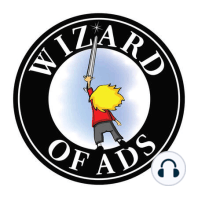3 min listen
What PPM Means
ratings:
Length:
8 minutes
Released:
Mar 19, 2012
Format:
Podcast episode
Description
To Radio AdvertisersBefore we begin, you need to know that a “3.0 frequency” is RadioSpeak for reaching the same listener 3 times. TSL means “Time Spent Listening” and PPM is “Portable People Meter.”Hi Roy, I’m sure that you receive this question often, but I didn’t find your personal response to it online. How do you believe the reduction in frequency realized through the implementation of PPM should affect media planning? The obvious response is that PPM derives a more accurate measure of TSL, and therefore these “new” metrics should now be the benchmark…but what does that say about the “old” 3.0 frequency? Previous studies showed the “old 3.0” was effective. In the end, the PPM 3.0 is clearly a safe bet for results…but the question is whether old schedules, previously deemed effective, should be shifted to reduce reach and increase frequency…and whether that change will further enhance results or not.Thank You!Ashley Alexandra Testa Ashley, you ask a good question.For those who aren’t completely up-to-speed on Arbitron’s new Portable People Meter (PPM) technology for radio measurement, here are the basics:1. Arbitron survey respondents now carry a device that records which stations they’re actually listening to, not just the ones they think they’re listening to, as was often the case in the old “diary” based method.2. This means radio stations get credit for actual listening time rather than just how well they imprint their station slogans and taglines onto our memories.3. Consequently, lots of “favorite” radio stations are being revealed to have smaller audiences than was previously believed, while lots of second and third-favorite stations are finally able to prove what they’ve always known: listeners were listening to their stations and then reporting to Arbitron they were listening to the “brand name” leader.4. The average person listens to a larger number of different stations than they realize.5. This makes it harder than ever to achieve frequency (repetition.)Now back to Ashley’s question, which was, effectively, “Since PPM shows us a schedule that yielded a diary-based 3.0 frequency yesterday yields only a 2.5 when measured with PPM today, should we start targeting a 2.5 frequency instead of 3.0?”Ashley, the short answer would be “Yes” if short answers weren’t so dangerous. Our dilemma lies in the premise stated in your note: “In the end, the PPM 3.0 is clearly a safe bet for results…”A 3.0 frequency is not, and never was, a safe bet.Results in radio are based on three things:(1.) Relevance. Does the listener care? And if so, how much?(2.) Credibility. Does the listener believe the claims made by the advertiser?(3.) Frequency. (Repetition.) How often is the listener exposed to this message?Relevance without credibility is the definition of hype.Credibility without relevance is the answer to a question no one was asking. A message with high relevance and high credibility for a product or service with a short purchase cycle is the perfect Direct Response ad. For such an ad, a frequency of 1.0 will work just fine.But very few ads have such relevance and credibility that they need to be heard only once.Insufficient repetition kills a lot of radio campaigns. But radio people often blame poor results on insufficient frequency, saying, “The advertiser just didn’t spend enough money,” when the real problem was in the
Released:
Mar 19, 2012
Format:
Podcast episode
Titles in the series (100)
The Gift of 500 Years by Wizard of Ads Monday Morning Memo
